First Envision Award in Canada
The Grand Bend Area Wastewater Treatment Facility, located in Ontario on the shoreline of Lake Huron, earned the Envision® Platinum level award. This project is the first ISI Envision verification in Canada, and first wastewater facility to be ISI Envision-verified in North America.
For the project, the municipalities of Lambton Shores and South Huron commissioned global design firm Stantec to convert one of four existing lagoons into an extended aeration mechanical treatment facility and wetland nature reserve. The facility prevents effluent discharges from adversely impacting surface and groundwater quality and allows for responsible community development. Stantec used the ISI Envision framework during the design to integrate sustainable features throughout the facility.
Key sustainable features include a constructed wetland to support native wildlife species and further buffer treated effluent, flexible design that makes the facility responsive to changing sewage flows, reduced construction and operational costs through a focus on efficiency, constructing the project within the boundaries of the original facility’s footprint to protect prime farmland, and trails and interpretive signage to encourage community visitors.
“The Grand Bend Area Wastewater Treatment Facility achieved the Platinum award, the highest ISI Envision verification level, because it meets the needs and sustainability goals of stakeholders,” said ISI President and CEO, William Bertera. “This is the first ISI Envision-verified project in Canada, and both the Stantec project team and municipalities of Lambton and South Huron made significant public commitments to the principles of sustainability. They involved the community on key project issues and concerns, and made sustainable design choices to reduce negative impacts.”
“Stantec is very proud of this first-ever ISI Envision verified project in Canada,” said Elvio Zaghi, Stantec’s Project Manager. “The Grand Bend Area WWTF will protect the shoreline waters of Lake Huron, the area’s most important natural and recreational asset.”
“The Municipality of Lambton Shores is excited to have achieved ISI Envision verification of the Grand Bend Area WWTF with our partners – the Municipality of South Huron and Stantec,” said Director of Community Services, Municipality of Lambton Shores, Brent Kittmer. “We take great pride in our efforts to achieve sustainability, and hope this project will pave the way for others in Canada to pursue Envision verification in their infrastructure designs.”
“This project reflects the Municipality’s commitment to protecting the Lake Huron shoreline environment and contributing to the improvement of water quality in the Great Lakes,” Says Don Giberson, Environmental Services Director with the Municipality of South Huron.
About ISI Envision
The ISI Envision system measures sustainability in infrastructure projects through the measurement of five categories: Quality of Life (QL), Leadership (LD), Natural World (NW), Resource Allocation (RA), and Climate and Risk (CR). These contribute to overall credits for the positive social, economic, and environmental impacts in a community in the planning, design, and construction of infrastructure projects.
The highest-rated project categories that the Grand Bend Area WWTF scored using the Envision rating system include:
Quality of Life (QL): Following value engineering sessions and comprehensive reviews, the team achieved significant cost savings for the local municipalities and reduced impacts on nearby residents while maintaining high levels of performance. Numerous features were incorporated into the facility’s design to address resident and stakeholder concerns. Key issues included odour control measures, reduction in negative tourism impacts to beach water quality, noise attenuation to improve community livability, and reduced construction costs.
The site is being restored to native conditions with a constructed wetland. Trails are being installed, and visits to the site are encouraged by the municipalities. In addition, efforts are being taken to actively promote school groups visiting the site for educational purposes.
Leadership (LD): The nature of this project is meant to extend the useful life of the existing facility to ensure its ability to meet community needs today, and for many years into the future. Key design features enhance its durability, flexibility, and resiliency. The facility can be reconfigured and/or expanded to meet new demands, and respond to changing sewage inflows through the use of flow equalization to prevent sewage bypass events.
The team’s collaboration with stakeholders goes beyond project construction. Input from local volunteers and non-profit organizations was essential to planning for the restoration, planting, and maintenance of natural features of the site. The project team is negotiating an agreement with a local university to allow graduate students to conduct long-term academic studies on wastewater quality. A public website provides an avenue for stakeholders to communicate with the project owners.
Resource Allocation (RA): Constructing on the existing lagoon site required considerable fill to elevate the facility. The construction of the wetland provided an opportunity to reuse excavated soils on-site and significantly reduced the need for imported fill and associated costs. Facility performance was improved and project costs were reduced through energy efficient systems, eliminating potable water consumption for process equipment, and reusing digested sludge material from the lagoons as fertilizer for new vegetation.
Natural World (NW): Naturalized prime habitat was created through the design of the constructed wetland and restoration of a tallgrass prairie on-site. The project team worked with local conservation groups, volunteers, and municipal staff to develop a plan that supports the elimination of invasive species. It also restores habitat critical to threatened native species, including the Monarch butterfly, snapping turtle, and Bobolink. The site provides a new protected space for these species and assists with their recovery in the local area.
Climate and Risk (CR): The project design addresses projected changes in population and service area growth and increases in frequency and severity of extreme rainfall events in southern Ontario. The design is consistent with the recommendations incorporated in the “Ontario Adaptation Strategy and Action Plan” based on provincial analysis of expected climate impacts. By developing a more responsive and flexible design, the facility is freed from configuration issues that may reduce its functionality in the future.



